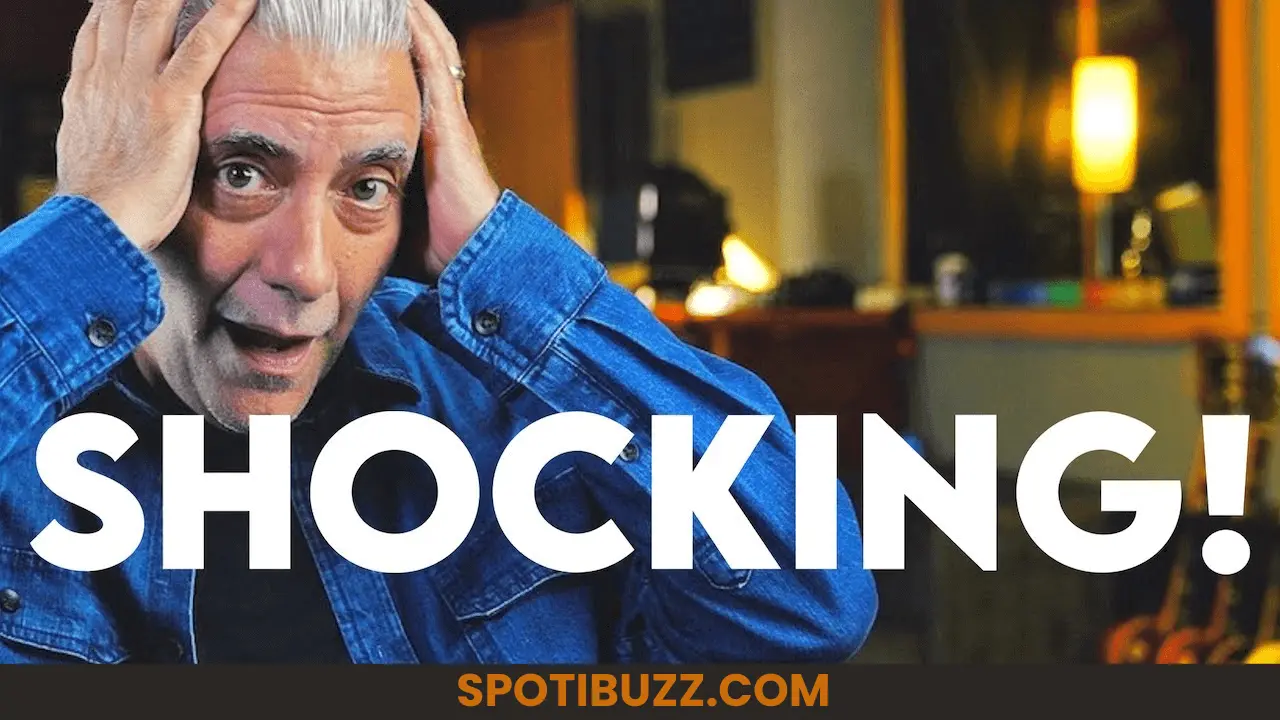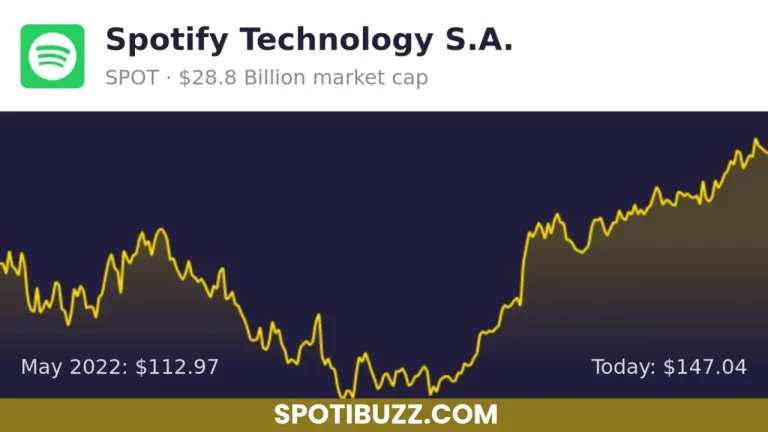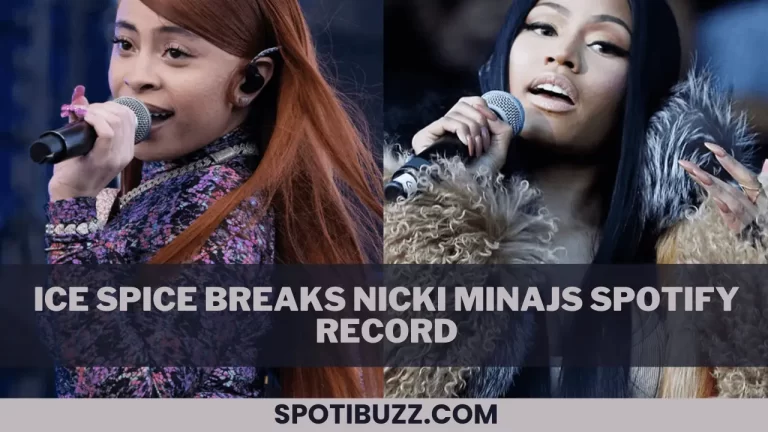This Insider Spotify Data Is Mind-blowing: Amazing Secrets
Reading “This Insider Spotify Data Is mind-blowing”, you will explore the working procedure of Spotify, its user’s listening preferences, and how Spotify collect data and analyze and learns user behaviour. Explore the ways to access data of insider Spotify and be surprised by the data-driven magic of Spotify.
Exploring This Insider Spotify Data Is Mind-blowing
As you know, Spotify is a leading music streaming service worldwide with millions of songs and over 400 million user base, but do you know what kind of data Spotify collects from its users to make its services better in comparison to its competitors? If you don’t know, then you are definitely searching for insider Spotify data. Insider Spotify data is available online. This data solely reveals the working system of Spotify. If you want to access insider Spotify, you can do so using Spotify’s own datasets and tools, third-party websites and apps that analyze your listening habits, and podcasts that discuss Spotify’s data-driven strategies. These sources can help you discover new insights about your music preferences, compare your tastes with others, and learn more about the music industry and technology. In the article “This Insider Spotify Data Is Mind-blowing”, we will explore all these sources and how to access them. Let’s get started.
Spotify’s datasets and tools
Spotify is a music streaming platform that operates on a massive scale: It has millions of listeners whose activities generate huge amounts of raw data. But raw data by itself is not that helpful; Spotify needs to be able to process, manage, and distil it into insights that can inform new features or improvements to the experience. And to do that, it needs usable, well-designed tools that ensure these insights can be easily understood. Spotify’s data scientists use a variety of tools to transform raw data into usable insights. In “This Insider Spotify Data Is Mind-blowing”, we will describe these tools in detail:
- BigQuery: This is a Google data warehouse product with a web user interface where data scientists can store and process data. They can write queries here to make sure they have the right dataset for their question.
- Jupyter Notebooks: These are open-source interactive workspaces for running code in blocks mixed with prose. After data scientists use the BigQuery UI to validate their dataset, they use local notebooks to find insights, create visualizations, which explain the findings, and share their work (among other tasks).
- ScienceBox: This is an internal Spotify command line interface tool to help speed up the way data scientists use notebooks. It’s commonly used as a way to organize files into projects, pre-install data science libraries, and create a standardized and reproducible data analysis workflow.
These above give tools work well for small datasets but not for large scales. As data scientists are expected to work with bigger and bigger datasets, they have to wait longer to see the results of their code. That’s why Spotify has been developing new data science tools that would expedite insights production and eliminate those old, inefficient ways of working.
- Dataflow Notebooks is one of the new tools, which is a web-based notebook environment that runs on the Google Cloud Platform. Dataflow Notebooks allows data scientists to write code in Python or SQL and execute it on large-scale distributed data processing pipelines. This means they can process and analyze huge amounts of data faster and more reliably than before.
- Datasets is another new tool, which is a web portal where data scientists can discover, explore, and request access to various datasets for everything from podcasts to music recommendations. Datasets provide metadata, documentation, and sample queries for each dataset, as well as an easy way to launch Dataflow Notebooks with the selected dataset.
These new tools are part of Spotify’s efforts to design data science tools that are user-friendly, scalable, and collaborative. By providing data scientists with the best tools possible, Spotify hopes to enable them to find high-impact insights from the huge amounts of data they collect every day.
[su_heading size=”14″ align=”left”]
Third-Party Websites And Apps That Analyze Your Listening Habits
[/su_heading]
Spotify is not only a music streaming platform but also a treasure trove of data about your listening habits. You can see some of this data in your Spotify Wrapped playlist at the end of the year, where you get insights into which artists, tracks, genres, and more took over your playlists for the year. But what if you want to dig deeper into your Spotify data and see how your music taste evolves over time, how it compares with others, or what new music you might like? Well, there are many third-party websites and apps that can connect with Spotify and analyze your listening habits in various ways. In this section of the article, “This Insider Spotify Data Is Mind-blowing”, we got covered some of the best third-party websites and apps that can help you discover more about your Spotify listening habits:
Stats for Spotify:
This is a classic Spotify data analyzer that shows you your top five artists and tracks in the past month, past year, and of all time. You can also see your top genres and recently played tracks. Plus, you can create a playlist from your top tracks and order a poster of album covers based on your music taste.
Obscurity:
This is a web-based app that measures how obscure your music taste is compared to other users in your country and globally. You can also see your top ten genres, most obscure artists, Spotify moods, favourite music by the decades, and top artists and tracks. Additionally, you get recommendations for new music based on your obscurity percentage.
The listening stats:
This is an online music discovery app that offers a suite of tools to expand your music horizons, including statistics for your Spotify profile and playlists. The listening stats tool gives you visual insights into your music listening habits, including your top-played genres, artists, songs, moods, decades, and more.
How Bad Is Your Spotify:
This is an AI that judges your music taste based on your Spotify data. It will roast you for your most-played artists, tracks, genres, and guilty pleasures. It will also give you some backhanded compliments and sarcastic recommendations. This app is meant to be humorous and not taken seriously.
Instant:
This is a fun app that generates a personalized music festival lineup of your most-listened artists on Spotify. You can choose the number of artists, the festival name, and the background image. You can also share your lineup with friends or download it as an image.
[su_heading size=”14″ align=”left”]
Podcasts That Discuss Spotify’s Data-Driven Strategies
[/su_heading]
Spotify uses data to inform its product decisions, improve its user experience, and grow its business. If you want to learn more about how Spotify leverages data to achieve its goals, you might want to listen to some podcasts that discuss Spotify’s data-driven strategies. Here, in “This Insider Spotify Data Is mind-blowing”, we will explore some of the podcasts that can give you insights into Spotify’s data strategy and how it drives business growth:
- The Data Strategy Show: This podcast explores the relationship between data strategy and business strategy. A fireside chat between the host Samir Sharma and executives from across industries. In episode 13, Sharma interviews Mayur Gupta, the Chief Marketing and Strategy Officer at Gannett, who was previously the Global VP for Growth and Marketing at Spotify. They talk about how Spotify uses data to create personalized experiences, drive user engagement, and optimize marketing campaigns.
- Insights Tomorrow: This podcast covers topics related to data science, analytics, and artificial intelligence. In episode 4, the host Prashant Natarajan interviews Scott Taylor, a data evangelist and author of the book Telling Your Data Story. They talk about why it is hard for an organization to align on a data strategy and how to overcome the challenges. They also mention Spotify as an example of a company that has a clear data strategy and alignment.
- Product to Product: This podcast features conversations with product leaders about building products that people love. In season 7, episode 10, the host Latif Nanji interviews David Cutler, a product manager at Spotify. They talk about some of the features he has launched, how he uses data to make informed product decisions, and why product organizations need data teams.
[su_heading size=”14″]
Frequently Asked Questions
[/su_heading]
[su_heading size=”14″]
Final Analysis This Insider Spotify Data Is Mind-blowing
[/su_heading]
In the article “This Insider Spotify Data Is mind-blowing”, we have explored that If you want to learn more about how Spotify uses data to inform its product decisions, improve its user experience, and grow its business, you might want to listen to some podcasts that discuss Spotify’s data-driven strategies. If you are curious about how your music taste evolves over time, how it compares with others, or what new music you might like, you might want to try some third-party websites and apps that can analyze your Spotify listening habits in various ways.
If you are interested in how Spotify leverages data to create personalized experiences, drive user engagement, and optimize marketing campaigns, you might want to explore some of the features and tools that Spotify offers, such as Discover Weekly, Spotify Wrapped, and Dataflow Notebooks.







